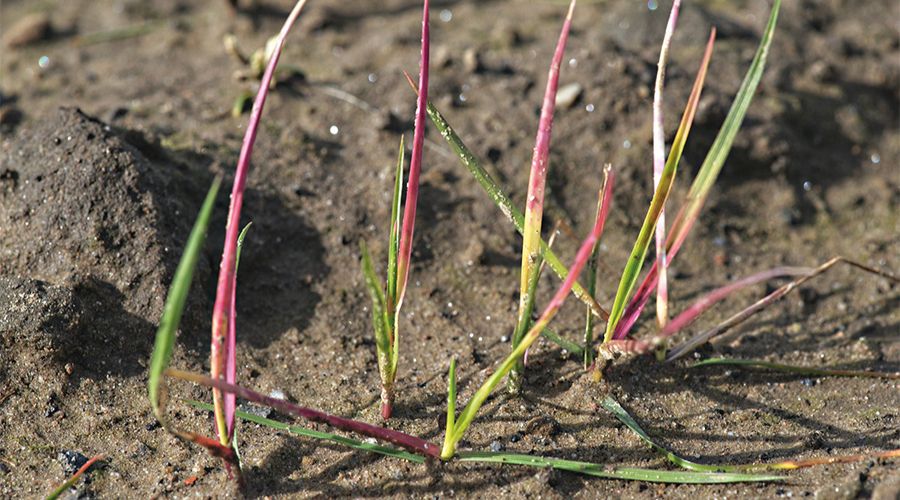Weed control: We need to combat diversity with diversity
21st November 2024
Introducing FMC’s newest herbicide active, Isoflex, experts explored the increasingly complex challenge of weed control. Sarah Kidby reports.

Although black-grass and ryegrass often dominate conversations in the media and with farmers, John Cussans, ADAS weed science principal consultant, said pesticide use surveys present a more complex picture.
During a press briefing to introduce new active Isoflex, he commented: “In the real world, there are a lot more diverse targets for weed control than just aggressive annual grassweeds, and actually I think we’re guilty of overfocusing on grassweeds and not capturing the diversity of challenges of individual farmers around weed management.”
Impact of conservation ag
Some interesting trends are emerging around the impact of conservation farming practices on grassweeds, John explained. Research in France – where there is a formal definition and subsidy around conservation agriculture – shows the diversity of crops, cultivations and approaches is driving a diversity of weed species.
Minimum soil disturbance has resulted in an uptick in perennial species, small seeded and widely dispersed species, while permanent vegetation cover has also increased perennials. Essentially, John said: “As you diversify cropping, you diversify the weed species”.
This scenario is also beginning to appear in the UK with an uptick in small seeded, widely distributed species that are excluded by intensive cultivation, but capable of invading no-till systems quite readily.
We’re also seeing a rise in species with different lifecycles, John explained – for example groundsel can complete its lifecycle within the lifetime of a cover crop. “I think we need to be aware of this and think about how it might challenge our existing herbicide and weed management practices,” he added.
Increasingly complex weed control
There is also the continued trend for herbicide resistance to consider. Both the frequency and the number of traits of specific weeds resistant to different herbicides are increasing year on year. Most recently in the UK, we’ve seen the emergence and development of flufenacet resistance in Italian ryegrass, which the latest ADAS survey found was present in 10% of Italian ryegrass seed samples it had received.
Added to this is increasing regulation and the withdrawal of actives. “We really need to think about how weed management is becoming a more complex and diverse topic. The bottom line is: how are we going to address these challenges going forward? The answer is to combat this diversity with our own diversity,” John believes.
For herbicides, this means new modes of action, more selectivity in using different actives, and flexibility in timings and patterns of use. Additionally, cultural control must be diversified – we’ve tended to use one or two strategies exclusively and forget the range of options available, John explained.
And finally, non-chemical controls – we’re beginning to see options such as weed seed control, seed mills, weed surfing and inter-roe hoeing. On the horizon are focus light tools, targeted energy tools and electric weeding.
New mode of action
FMC’s Geoffrey Bastard introduced the company’s latest herbicide active Isoflex, which is set to deliver a new mode of action and two new actives for the control of grassweeds and broad-leaved weeds in winter cereal crops.
There are currently around six modes of action in the autumn herbicide cereal market – a low number if you want to effectively alternate weed control actions year on year, he noted. The first product, due for launch in autumn 2025, is a ZC co-formulation containing 200g/litre of bixlozone and 125g of beflubutamid.
FMC has a long history of using encapsulation technology, which offers benefits for performance and persistence in the field, as well as safety for some of the more sensitive crops, said FMC technical leader, Gareth Jones.
This development is particularly crucial given the loss of actives, with particular concerns over the threat of flufenacet withdrawal, which is a market leader in terms of the area to which it is applied, Geoffrey added.
In winter wheat, Isoflex targets pre- and peri-emergence, while in winter barley it’s pre-em only. Uptake is via the root and shoot, with some leaf uptake.
Talking through Isoflex’s benefits, Geoffrey said it promises the broadest range of autumn cereal herbicide weed control, expected to provide varying levels of suppression to 21 broad-leaved weeds and four grassweeds.
Another benefit is the flexibility it offers in both winter wheat and winter barley – there are currently six modes of action and 11 actives approved for wheat, but even less in barley. Finally, Isoflex has a simple product use rate of 1 litre/ha.
Weed control – seeing results in pink
Explaining the decision to use pink in the marketing and promotion of the product, Geoffrey said weeds treated with the product will turn pink, where there is optimum uptake.
Trials achieved promising results, with average headcount control of 53% for black-grass, and 64% for ryegrass. However, it was possible to achieve 95% control. Isoflex also showed significant control across a wide range of broad-leaved weed species (90%+).
Gareth said growers need to think holistically and look at all the available tools – whilst herbicides are the final step on the weed control pyramid, they are not a ‘one can solution’ and should be used alongside other strategies such as alternate cropping and control mechanisms.
Concluding, Geoffrey stressed: “We can’t forget the broad-leaved weeds because they can be just as detrimental when it comes to weed competition and yield penalties, so it’s about the broader picture of weed control.”
Read more arable news



